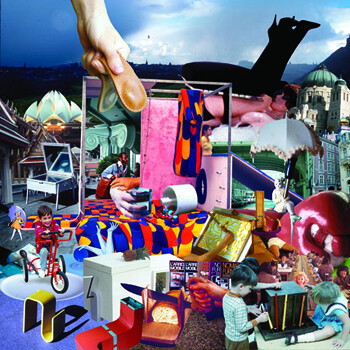September 25–December 15, 2014
Opening reception: September 25, 6:30–8:30pm
Anna-Maria and Stephen Kellen Gallery
The Sheila C. Johnson Design Center
Parsons The New School for Design
66 Fifth Avenue
New York
Hours: daily noon–6pm, Thursday until 8pm
www.newschool.edu/parsons
Twitter / Facebook
How Things Don’t Work: The Dreamspace of Victor Papanek juxtaposes previously unseen materials reflecting the life and creations of Papanek (1923–1998), one of the earliest advocates of socially and ecologically responsible design, with the work of emerging designers from Vienna, London and New York City. By bringing his work into conversation with a contemporary, speculative approach, the exhibition challenges Papanek’s legacy and its relevance to the contemporary design landscape.
“The exhibition provides unique insight into one of 1970s’ most controversial design figures, while confronting his legacy in ambitious and unexpected ways,” the curators said in a joint statement.
The exhibition’s four sections combine video, digitized slides and prints that create a kaleidoscopic “dreamspace” that prompts viewers to consider how they might design themselves out of their dystopian present.
Papanek—an Austrian-born designer, philosopher and educator—was a forerunner of sustainable design, speaking out on the subject in his books and lectures, and creating his own products, including a taxi for people with disabilities and a manure-powered pig farm.
He was equally vocal in his denouncement of his fellow designers. “Advertising design, in persuading people to buy things they don’t need, with money they don’t have, in order to impress others who don’t care, is probably the phoniest field in existence today,” Papanek wrote.
Though Papanek’s words still resonate today, the context for design has changed dramatically. Globalization and the rise of information technologies have created both opportunities and challenges that did not exist when Papanek was first practicing. Moreover, innovations in computer, biological and financial systems have collided with a looming environmental catastrophe to upend the core presumption of design as a social good.
“The critical and imaginative encounter staged by this exhibition reflects our mission to provoke an active and ongoing dialogue on the role of art and design at this time,” said Radhika Subramaniam, Director/Chief Curator of the SJDC.
The exhibition—a collaboration between Parsons The New School for Design and The University of Applied Arts, Vienna—was co-curated by Alison Clarke, Director of the Victor Papanek Foundation at the University of Applied Arts; Jamer Hunt, Director of the Transdisciplinary Design graduate program at Parsons; and Fiona Raby, Professor of Industrial Design at the University of Applied Arts.
Works from the Victor Papanek Foundation at the University of Applied Arts will be on view, as will contemporary creations from design studios Superflux and The Extrapolation Factory; Jacqueline Cooksey and Benjamin Winter; Zoe Hough; Ashley Graham, Colleen Doyle and Chisun Rees; Lana Porter; Sacha Pohflepp; Daniel Riegler; June West, Rachael Fried and Joseph Wheeler; Lillian Shi Tong, Selim Budeyri and Martin Storkholm Nielsen; Alexandra Fruhstorfer and Lisa Hofer; Jennifer Morone; Kelly L. Anderson, Rachelle Tai and Leah Cabrera; Yosuke Ushigome; Irene Posch and Ebru Kurbak; Christopher Taylor Edwards, Gulraiz Khan and Dongin Shin; Alexandra Fruhstorfer; and Katharina Unger.

